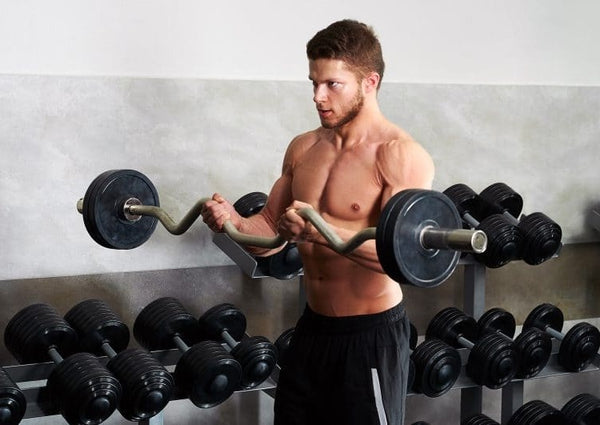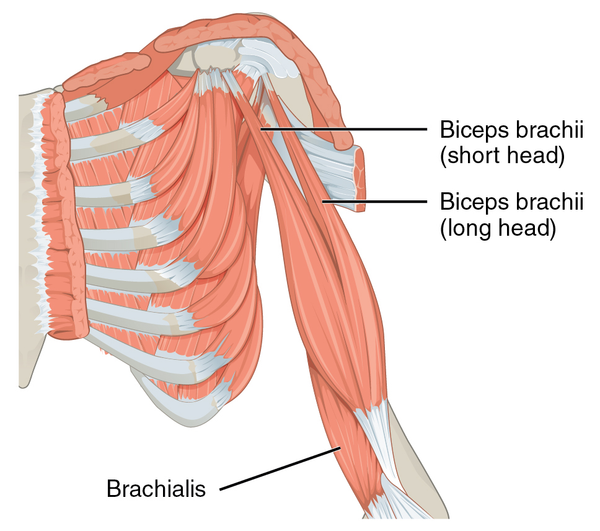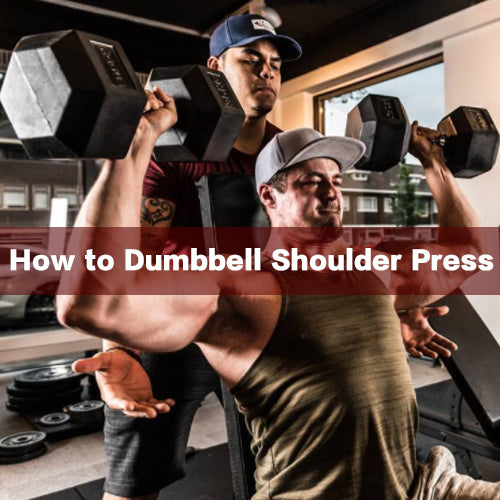To train wide shoulders, you need to strengthen the middle deltoid muscle bundle, and usually choose to do dumbbell lateral raise. From the beginning of the fixed set of incremental sets, you can also choose to train with a single handheld dumbbell, which can achieve a pumping effect at the end.
But dumbbell lateral raise is easy to shrug, and the use of weight will be limited, at this time a new movement is created, it is the "EZ bar upright row".
Understanding the EZ Bar Upright Row

The EZ bar upright row is a variation of the traditional barbell upright row, utilizing a slightly curved bar with angled grips – often referred to as an "EZ bar" or "EZ curl bar." This specialized bar allows for a more comfortable and natural grip position, reducing strain on the wrists and forearms compared to a straight barbell.
During the movement, you stand upright while holding the EZ bar at arm's length, with an overhand (pronated) or underhand (supinated) grip. You then row the bar straight up towards your chin or lower chest, keeping your elbows elevated and your body stable throughout the motion.
EZ Bar Upright Row Muscles Worked
Here are the primary muscle groups worked during the EZ bar upright row:

Main Movers/Target Muscles:
- Deltoids (all three heads - anterior, medial, posterior)
- Trapezius (upper and middle fibers)
The deltoids and trapezius are the prime movers and target muscles for the EZ bar upright row. This exercise emphasizes overall deltoid development, building rounder, broader shoulders from multiple angles.
The upright rowing motion heavily engages the trapezius, especially the upper traps, promoting thickness and development in the upper back area.

Secondary Movers/Synergists:
- Biceps Brachii
- Brachialis
- Brachioradialis
The biceps brachii, brachialis, and brachioradialis act as secondary movers or synergists during the upright row, assisting in the pulling motion and elbow flexion.
Stabilizers:
- Rotator Cuff (supraspinatus, infraspinatus, teres minor, subscapularis)
- Rhomboids
- Core (abdominals and spinal erectors)
The rotator cuff muscles work isometrically to stabilize the shoulder joint throughout the upright rowing movement. The rhomboids also assist in retracting and stabilizing the shoulder blades.
Maintaining an upright, braced torso position requires engagement of the core muscles, including the abdominals and spinal erectors.
By targeting this combination of muscles, the EZ bar upright row contributes to overall shoulder development, upper back thickness, biceps peak, grip strength, and core stability. Proper form is key to maximizing muscle activation and getting the full benefits of this compound exercise.
How to Do EZ Bar Upright Row?

While the EZ bar upright row may seem like a straightforward exercise, proper form and technique are essential for maximizing the benefits and minimizing the risk of injury.
- Choose an EZ bar, stand naturally with your body, and hold the barbell squarely in the middle of the bent position with both hands.
- Tighten your abdomen, straighten your back, lift the barbell upward until both shoulders are fully elevated, then lower it back down and repeat.
Note: The entire movement shows a straight up-and-down trajectory, using a narrow grip distance can easily lift the barbell.
The top position strengthens the upper deltoid mid-bundle, while the traditional lateral raise stop when lifted to the horizontal position, filling the shoulder recess position and making the whole shoulder fuller. It can also lift larger weights, even with borrowed force.
Related: EZ Bar Vs Straight Bar
Benefits of the EZ Bar Upright Row
-
Shoulder Development: The EZ bar upright row places significant emphasis on the deltoid muscles, particularly the lateral (middle) head. This exercise helps to develop and strengthen the shoulders, contributing to improved shoulder width and overall upper body aesthetics.
-
Upper Back Strength: Along with the shoulders, the EZ bar upright row engages the muscles of the upper back, including the trapezius and rhomboids. These muscles play a crucial role in maintaining good posture, shoulder stability, and overall upper body strength.
-
Traps and Upper Trapezius Activation: The upright row targets the upper trapezius muscles, which are responsible for lifting and retracting the shoulder blades. This can help improve upper back strength and give your traps a more defined appearance.
-
Biceps and Forearm Engagement: As a compound exercise, the EZ bar upright row also recruits the biceps and forearms as secondary muscles. While the primary focus is on the shoulders and upper back, the biceps and forearms work to assist in the pulling motion, contributing to increased overall arm strength and development.
-
Versatility and Variation: The EZ bar allows for a more comfortable grip compared to a straight barbell, which can put less strain on the wrists and elbows. This makes the EZ bar upright row a suitable alternative for individuals who may experience discomfort or limitations with a traditional barbell upright row.
-
Time Efficiency: The EZ bar upright row is a compound exercise that targets multiple muscle groups simultaneously. By incorporating this exercise into your routine, you can efficiently work the shoulders, upper back, and arms in a single movement, saving time while still reaping the benefits.
3 EZ Bar Upright Row Variations
Wide Grip Straight Bar upright row
The original EZ bar is changed to a straight bar, while the narrow grip is changed to a wide grip, and the short barbell can be held directly at the very edge of the position.
During training, you need to lean slightly forward and lift the barbell upward along your body, pulling it to the lower pectoral muscles at the bottom.
Note: Both upper arms present a straight line, elbows and shoulders aligned, elbows not excessively backward, using the shoulders to drive the barbell upwards.
The wide grip method allows the shoulders to open fully upwards and reduces shoulder joint stress when leaning forward, just choose a medium training.
Dumbbell Upright Row
Change the barbell directly to a dumbbell, place both hands squarely on the front of the thighs, and lift the dumbbell directly upward to a high position.
Note: At the bottom of the movement the dumbbells do not come close to fitting, upward when the two dumbbells naturally separate and stop at the pectoral position, when just the shoulders are aligned with the elbows.
Since the dumbbells are used, even though the grip is still narrow, it is more of a mid-deltoid force, so the degree of impact on the shoulder joint is less.
Cable Upright Row
Adjust the power cage slide to the lowest position, replace it with a wide handle, hold it with both hands in the bent position, and pull it from the bottom up to the high position.
Note: By choosing rack rope training, the trajectory of the movement changes, pulling the handles upward from the bottom of the incline, so that after the arms are slightly bent at the elbows, the shoulder abduction movement is easier and closer to the dumbbell lateral raise.
This method will also incidentally train to the anterior deltoid muscle bundle, as long as the arm flexion elbow amplitude is not too large.
You can try each of the three variations separately to see which method is more suitable for you, don't train at the same time, just choose to do fixed sets, 4 sets * 15 reps will do.
Tips for Optimizing Your EZ Bar Upright Row
- Warm-Up: Prioritize a dynamic warm-up routine to increase blood flow, warm up the muscles, and prepare your body for the exercise.
- Start with Light Weights: Begin with a weight that allows you to maintain proper form and gradually increase the load as you progress.
- Mind-Muscle Connection: Focus on contracting the target muscles throughout the entire range of motion, ensuring maximum engagement and optimal results.
- Incorporate Variations: Integrate different variations of the EZ bar upright row into your workout routine to challenge your muscles and prevent plateauing.
- Listen to Your Body: If you experience any pain or discomfort, consult with a qualified fitness professional to ensure proper form and technique.


